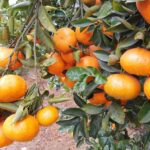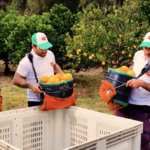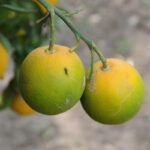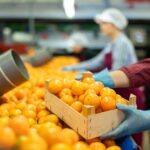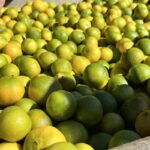Huge step made for developing disease-resistant citrus

An international research team led by University of Florida (UF) scientists has analyzed the genome sequence of 10 citrus varieties for the first time, paving the way for those looking to develop fruit that is resistant to the epidemic citrus greening disease HLB. 
Researchers from the United States, France, Italy, Spain and Brazil studied and compared the genome sequences of sweet and sour oranges, along with several important mandarin and pummelo varieties, as part of a decade-long project.
Team leader Fred Gmitter told www.freshfruitportal.com this was very important step, but emphasized it did not mean a solution to the disease was just around the corner.
"Having this information opens up a few pathways whereby HLB greening-resistant citrus could be developed. There are different paths and I think that researchers are intent on pursuing all of these," Gmitter said.
He explained that now they have the genetic blueprint of what a sweet orange genome should look like, one potential path could be to recreate the fruit by crossbreeding HLB-resistant parents that meet the blueprint's requirements.
"As we begin to do more research on other kinds of citrus that are either tolerant or potentially even resistant to greening, we would look at incorporating small pieces of their genomes into the parents that we would use to develop new sweet oranges with greening resistance," Gmitter said.
"Now that's not a short-term project."
Along with crossbreeding, another option would be to genetically modify the citrus, something that is already very popular today, but Gmitter said fruit altered in such a way often proved not to be popular with many consumers.
"There is a lot of effort going into genetically modified citrus, putting different things together and genetically transforming citrus to make them more resistant... but a lot of these sorts of productions are going to meet with market resistance," he said.
Citrus is the world's most widely cultivated fruit crop, and is a US$9 billion industry in Florida alone, according to UF.
The industry is seriously threatened, however, by a small bug called the Asian citrus psyllid that sucks on leaf sap and leaves behind the citrus greening bacteria. The disease renders the fruit unsuitable for sale and eventually kills the trees.
Gmitter said if a citrus variety resistant to HLB were developed in the future, he could foresee its use becoming widespread through the world.
"As greening is really spreading globally at a rapid rate, I would imagine that any place in the world that has greening would want to be using oranges that contain the change," he said.
"Also places where it doesn't exist, but might find its way there very soon, I imagine those places would also be interested in producing oranges of that type.
"In addition, if we have something that works in oranges, we certainly want to put it into grapefruit, we want to put it into lemon, we want to spread this protection across all the kinds of citrus that people grow."
Gmitter went on to explain the taste, appearance, healthiness, and even shelf life of citrus could theoretically be altered as a result of understanding the genetic structure.
For example, taste could be improved by reducing the fruit's acidity to make it sweeter, and could be made healthier by understanding how beneficial content like carotenoids are controlled and increasing their quantity.
"Having the genome sequence, any of the characteristics and traits that we want to alter or improve, or that we've been trying to improve by traditional breeding methods, we now have a tool at hand that enables us to go after that in a much more direct and efficient fashion," he said.
Gmitter also said the technological advancements these days were staggering, and he would not be surprised if in the near future new possibilties were opened up that might not have even been thought of previously.
"Really the technology is explosive, and this project is an excellent example of that. We started out looking at a US$3-4 million project to sequence a genome in a few years, and now I can get a genome sequence for under US$5,000 and it can be done in a week," he said.
"So the curve on the technology is pointing straight upwards."
History of citrus
Citrus was first domesticated in Southeast Asia thousands of years ago before spreading throughout Asia, Europe and the Americas via trade, and different varieties have unique genetic histories.
One of two wild species, Citrus maxima, gave rise to today's cultivated pummelo, while mandarins were found to be genetic mixes of second species and pummelo.
The sweet oranges we have today all originated from one single ancestral tree, according to Gmitter, and the fruit's unique reproductive biology meant they essentially cloned themselves through seed.
"If you plant a sweet orange seed, you get a virtually identical version on the tree you collected the seed from," he said.
"So by finding the first orange tree and by propagating it by seed and over time gradually identifying changes in the characteristics, or mutations if you will, and then propagating those and continuing to find more and more, not by crossing it with something else, you have the sweet orange today."
Gmitter said a very similar process happened with grapefruit around the 18th and 19th centuries. Mutations considered desirable, such as fewer seeds or a deeper color flesh, were found in some fruits which led to those ones being planted in the future.
Photo: www.shutterstock.com


















